77% of social media managers are burnt out
Part two of Link in Bio’s 2025 Social Media Salary Report.
Last week, we covered the money side of our salary report. We dug into the big dollar sign amounts to really understand how you compare to your peers when looking at years of experience, industry, and job title. You can find it here.
Today, we zoom in on how we are all feeling about working in social media right now. How many social media professionals feel like they are doing more than one job? Which industries are more prone to layoffs? How many of us want to leave the industry altogether? We answer all of that and more below.
Paid subscribers can join us in the Link in Bio Discord today. We’ll be talking about the data and answering any specific questions you have about the findings.
Thank you again to the 2,500 respondents who provided salary data from over 390 cities and 40 countries! This report is one of the newsletter projects I am most proud of and your contributions make it all possible.
- Rachel Karten and Mitch Goldstein
The impact of “always on”
Something has got to give. We had phrased this question slightly differently last year, where just over 80% of respondents said they worry about burnout in their role. This 77% figure from this year’s survey, representing those who are actively or recently feeling burnt out, should feel alarmingly high to any managers and leadership reading this.
We compared this 77% number to industry-agnostic studies around burnout in the workplace. A recent study from Moodle found that 66% of American employees today are experiencing some sort of burnout. This study from Robert Half found that 36% of U.S. workers report feeling burned out at work. The point? That 77% number is high.
Between exposure to online toxicity and harassment, plus having to feel “always on” to stay on top of trends, news, and platform changes, it is likely unsurprising to any hands-on-keyboard social team members that this metric is as high as it is. We feel like this presents yet another opportunity to continue to raise a flag that better staffed, resourced, and balanced social teams can help give social media managers the support they need and deserve.
Raises, promotions, and workloads
So many hats. Taking on a variety of tasks and responsibilities feels like it’s the standard for many social media industry workers at this point. From teams of one, who plan, write, create, and publish content all on their own to those who are picking up additional skills to help deliver on their creative or strategic visions—67.2% of respondents said they feel like they’re doing more than one job. An additional 22.5% of respondents said they “sometimes” feel like they’re doing more than one job. That leaves just 10.3% of those who feel like they always have a reasonable workload.
While just over half of all respondents received a raise in the last 12 months, only 24% of them got a promotion.
Managing in social media management
41% of respondents manage direct reports, with team size generally scaling with company size. While the chart above includes all responses from the survey, when filtering out the data from respondents who said they work at ad agencies, team sizes skew a bit smaller. Excluding agency teams, smaller companies (100 employees or less) average an in-house team size of 2 to 3 and larger companies have an average team size of 5 to 9.
All of that being said, this year we also had respondents answering they had teams of 50 or more. All of those larger teams were from companies with 1,000 or more employees total, so we echo a point for last year: larger marketing presences deserve an appropriately staffed social team to match.
On salary negotiations
We’re very pro-salary transparency (obviously), but the other thing we’ve heard in response to last year’s survey results is that a lot of people took this data with them into salary negotiations when they were discussing a new job or a raise at their existing one. Especially for those early or just starting their careers, your base starting salary can set the growth trajectory for your early career path, so it behooves you to try and get as high of a starting salary as you can.
As the data above shows, it’s worth it to ask for a fair shake. Of those that did negotiate their salary for their current role, almost 75% of them got more money than originally offered. Those who did successfully negotiate a higher base salary are making on average 15% more than those who didn’t negotiate at all. Reminder, if there is any data you need to help negotiate a raise for yourself that’s not included in this report, reach out to us! We are happy to help.
Layoffs
YoY, more respondents (48%) said their companies had layoffs in the last 12 months. Of those that had layoffs, 51% of them said that the layoffs directly hit them or their team members. While no company size was safe, large companies with 500 employees or more were the hardest hit.
We found that the industries that were most likely to be affected by social media layoffs were Ad Agencies, Technology, and Entertainment. In last week’s newsletter, we pointed out that these are some of the higher paying sectors. Given recent headlines from Amazon, Meta, Google, as well as Paramount, Warner Brothers, and CNN, it is worth noting that the major names in these sectors (as well as the agencies that name them as clients) may not be the steadiest of jobs.
Work/life balance
Being “professionally online” does not lend itself to being able to check out and log off easily. When asked about work/life balance, not much has shifted in the survey compared to last year. 19.6% of respondents gave themselves a 3 or lower (with 1 being “you never stop working”) and 17.4% of respondents marking down an 8 or higher (with a 10 being “totally unstressed.”) While the most common answer was a 7 out of 10, the bulk of respondents fall somewhere in the middle. However, workloads and responsibilities still seem to be weighing heavily on many of us.
The return to office
Overall, we haven’t seen any huge shifts in RTO trends since this time last year. A bit over half of all respondents are on a hybrid schedule, and of those hybrid workers most of them are in an office three days a week.
Lights, camera, action
Almost 40% of survey respondents said that they sometimes or often appear on camera as part of their jobs, up from 36% of respondents from last year. While this isn’t a major statistical shift, as video strategies become more important, we would not be surprised to see a slow but steady increase. As this newsletter has mentioned before, talent contracts should be considered for those who are effectively acting as the face of or spokespersons for brands and companies.
On unions
After last year’s survey, we saw a few comments and replies along the lines of “social media managers should really unionize already.” So, we asked! Only 6% of respondents said their position is unionized, and 14% said they’ve considered organizing their workplace. Of those who said they belong to a union, we saw the largest representation from Education and Academia, Politics and Government, and News and Media industries, accounting for over 40% of the unionized salaries we recorded.
Life after social
In the results from last year’s survey 43% of respondents were looking for new jobs. That number is down a bit, but YoY almost the same amount are still considering a transition out of working in social media roles specifically (45%). Given the high rate of burnout, the middling work/life balance, and other anecdotes you all shared, we can’t say we’re so surprised. There are certainly rewards in the creativity, strategy, and, frankly, fun we get to have with our work. At the same time, those rewards might be too few and far between for it to be worth it for some people.
We run this survey to share out the data on how much you should be compensated for the work you do, but also to let you know that you’re not alone in your struggles, or feelings of burnout, stress, or anxiety.
Thank you all again for filling out the survey. We are hopeful that the findings outlined today and last week will lead to more transparent conversations around salary, burn out, and team structure.
Finally, you can support free resources like this one with a paid Link in Bio subscription. You’ll get weekly strategy newsletters and quarterly trend reports, along with access to the very active Discord community.
Link in Bio is also likely an educational expense at your company. Here’s a template for you to use when asking your manager.



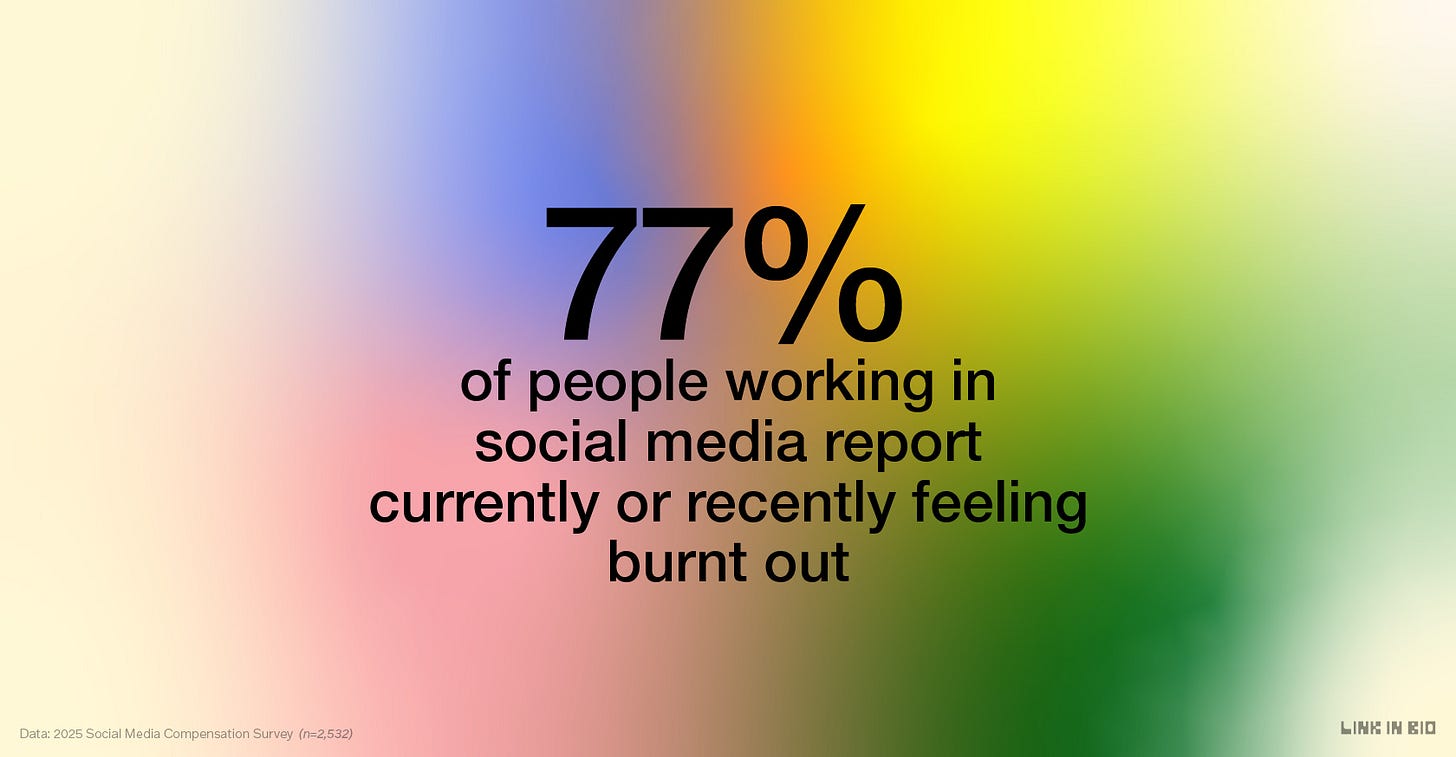

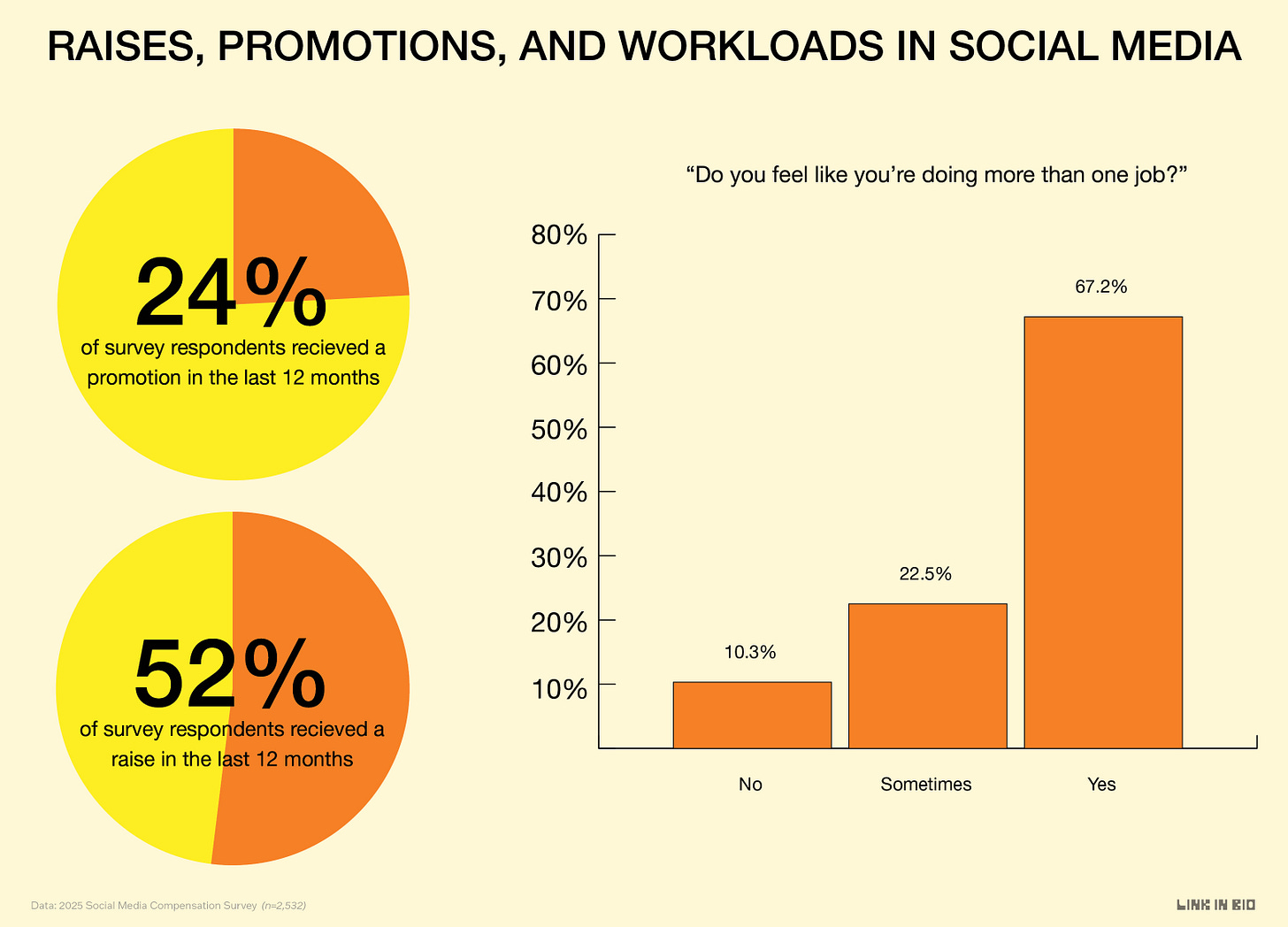



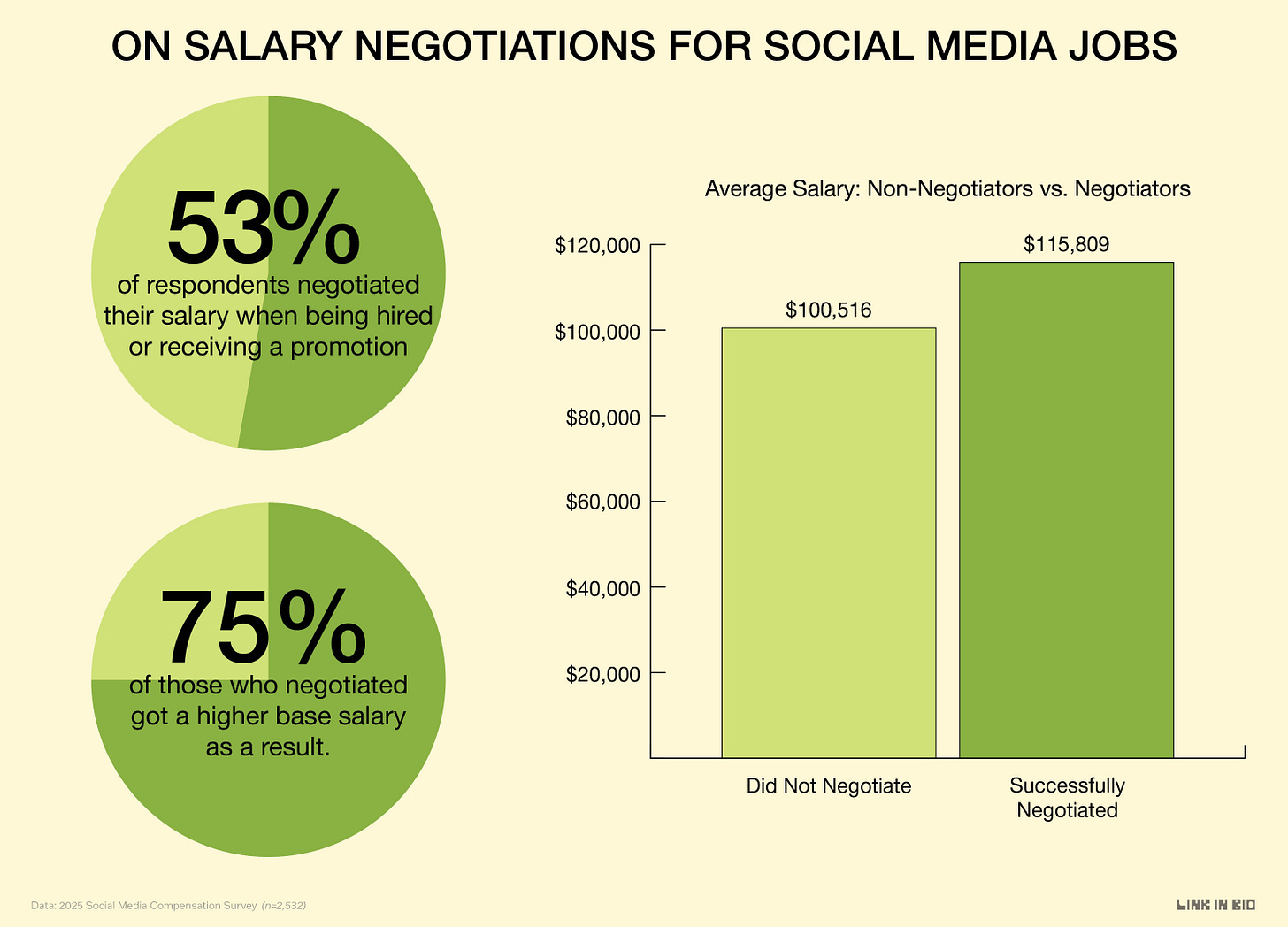

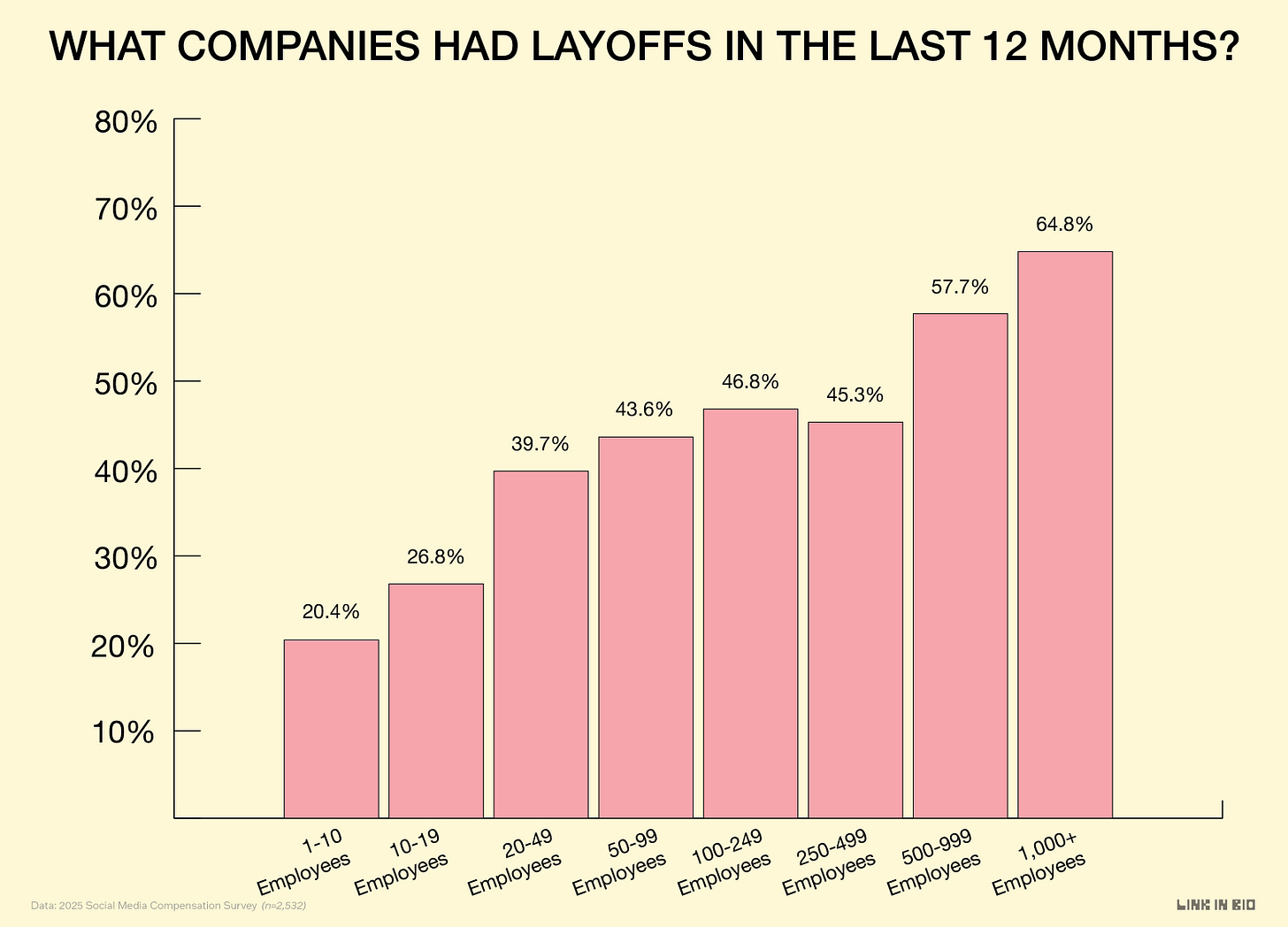

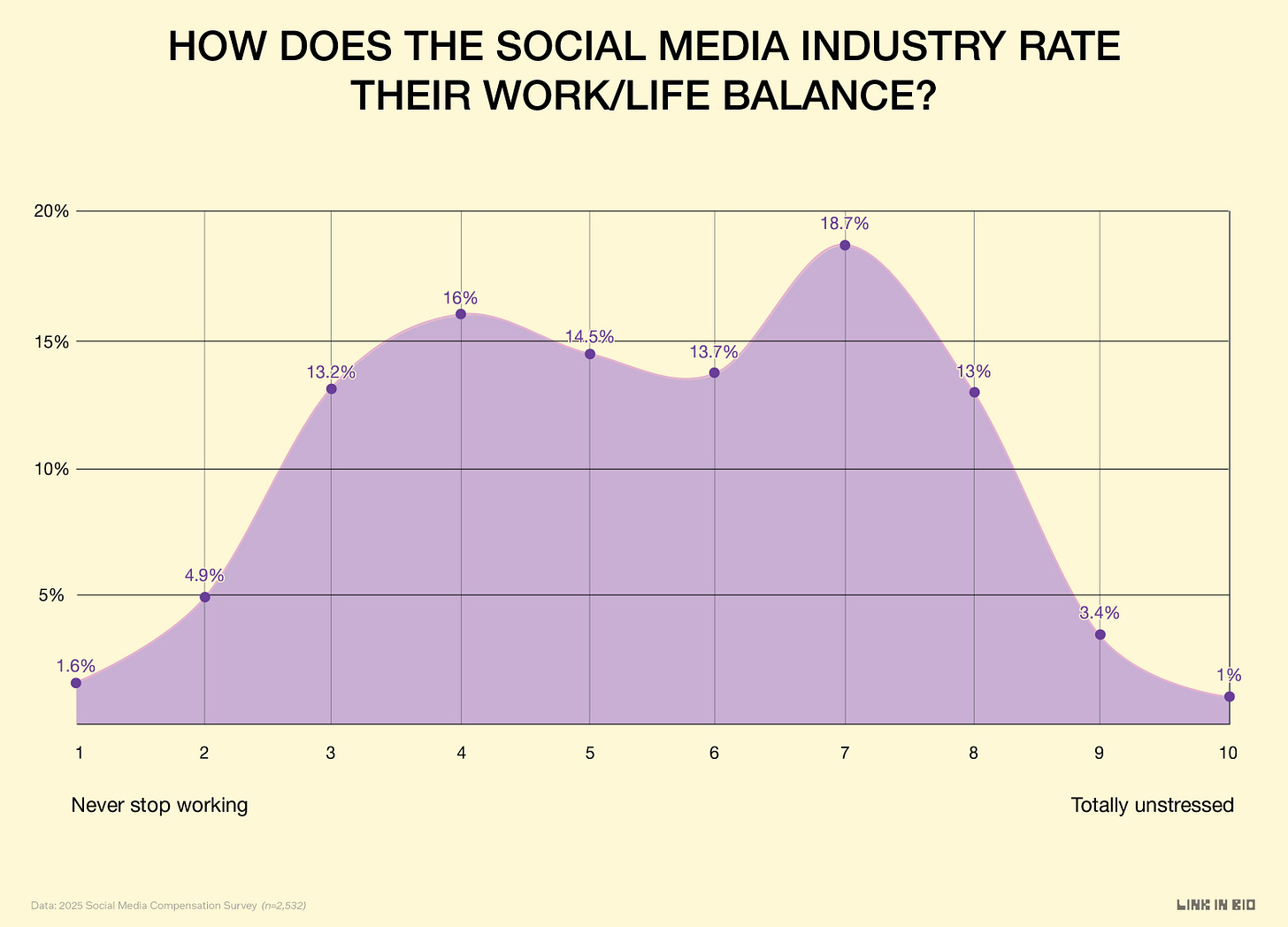

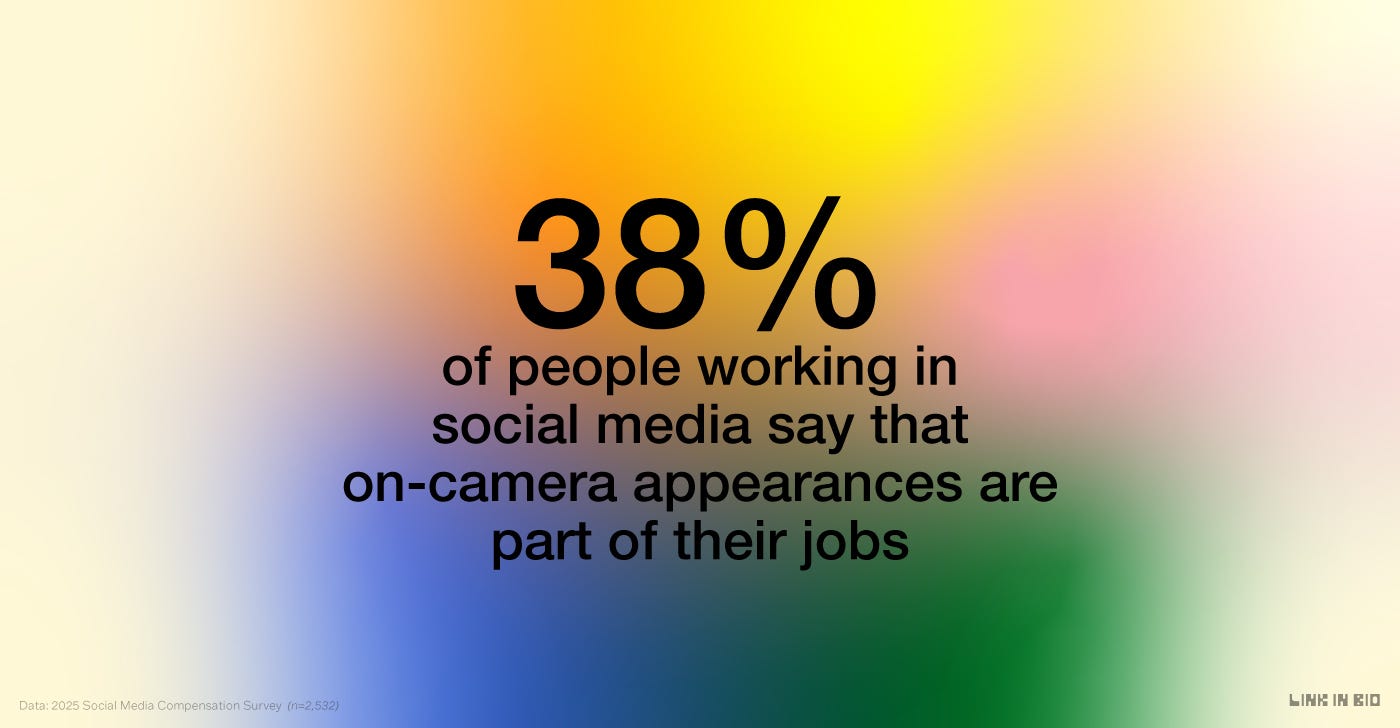



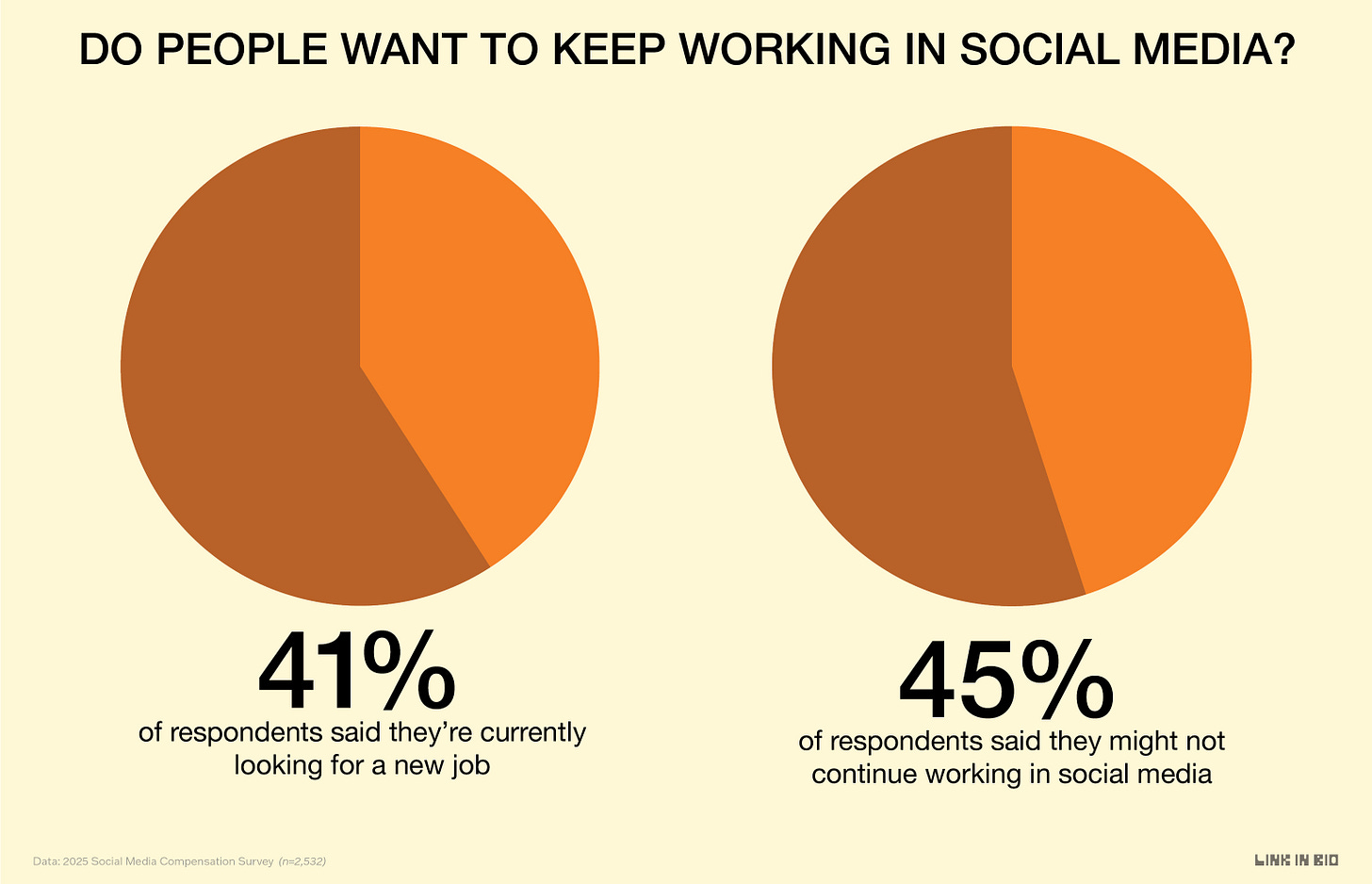
I feel that “approval hell” anecdote in my soul. I wish I could get through to my Gen-X, corporate-lingo-laced Comms Director, but here we are. I don’t feel heard or like my expertise and proximity to the user is valued.
This is such an amazing resource. Thank you for preparing this! As a SMM, I knew these numbers would be high but I never realized just ~how~ high they’d be 🤯